Are you ready for some incredible gopher facts?
Gophers spend their entire lives building complex burrow systems, eating, and mating. A single gopher can birth as many as 18 offspring in a year! Baby gophers are called pups, and they’re completely blind for the first few weeks of life. Once they gain their vision, the mother gopher sends the pups out to live independently.
What else should you know about gophers? Read on to learn 10 astonishing gopher facts.

1. Gophers Have Unusual Lips
Gopher lips are unusually adapted to fit behind their four incisors. The highly evolved lips help prevent dirt from entering their mouth while digging.
Since a gopher uses its teeth to dig, anything it can do to protect the dirt from building up in its mouth is a big help. Pocket gophers are known for having unique cheek pouches too. Their cheek pouches are perfect for transporting bits of food as they forage underground. It’s the furred-lined pouches that gave the pocket gopher its adorable name.

The gopher’s unusually adapted lips help prevent dirt from entering its mouth while digging.
©paha1205/Shutterstock.com
2. A Gopher Will Scream to Survive
Gophers are usually silent. However, sometimes they will scream to save a life! That’s right; gophers care about their family. Their biological predisposition towards nepotism pushes them to make high-pitched squeaking sounds when danger is near. Wolves, dolphins, and lions all share the same drive to protect their own kind.
By saving the life of a relative, the gopher helps guarantee the survival of its gene pool. Even though they’re willing to belt out a scream, that doesn’t mean gophers are outgoing animals. Instead, these ground-dwelling rodents are timid and seldomly interact with other animals.
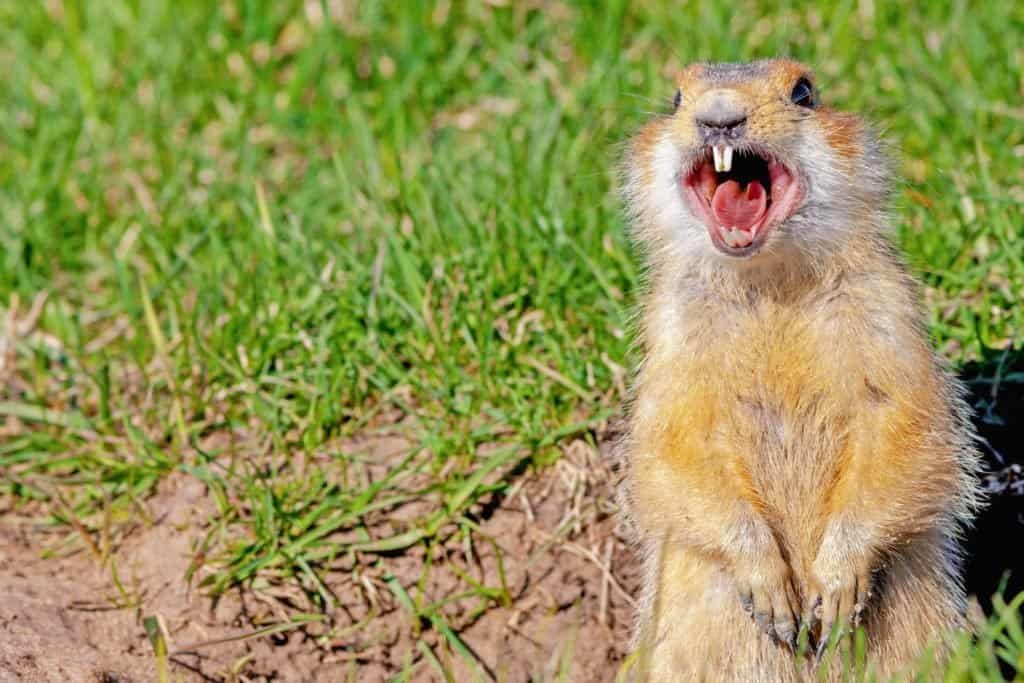
Gophers make high-pitched squeaking sounds when danger is near.
©SERGEI BRIK/Shutterstock.com
3. Gophers Are Smart Critters
Next, on our list of incredible gopher facts, let’s talk smarts! Anyone who’s ever tried to trap a gopher understands just how smart they can be. Gophers are intelligent critters; if you don’t know what you’re doing, they can easily outsmart you.
When a gopher escapes a trap, it learns from the experience. If a gopher detects the same trap, it’ll fill it with dirt and reroute the tunnel. The more a gopher successfully evades traps, the wiser it’ll become.
Trappers sometimes have to wait a week or two in between attempts to throw gophers off their games. Gophers may forget their trapping strategies by taking a little bit of time off.
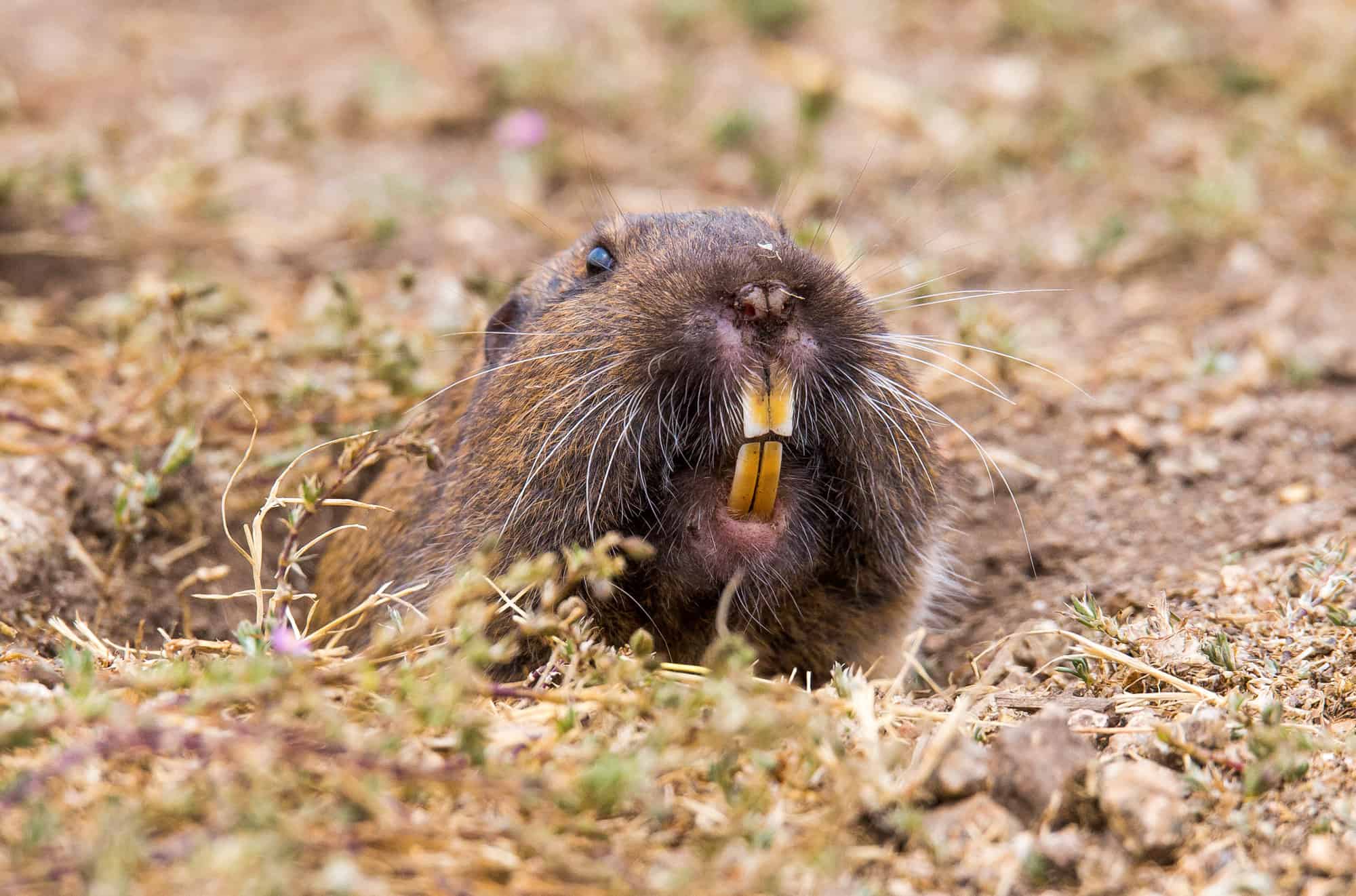
If a gopher detects the same trap, it’ll fill it with dirt and reroute the tunnel.
©iStock.com/stevelenzphoto
4. Gophers Are Tasty Snacks for Great Blue Herons
Great blue herons are wading birds that eat all sorts of things, including adult-sized gophers! There are a ton of videos online where people caught great blue herons in the act of swallowing gophers. The heron’s long tapered bill serves as a spear. Hovering over a gopher hole, the heron drives its beak into the hole once the gopher starts to move.
Emerging with the gopher in its beak, the heron will open its mouth wide and swallow it whole! Herons digest every little bit of the gopher, including the small bones and fur. Sometimes a great blue heron will hunt for several gophers before eating its meal. They’ve been known to kill multiple gophers and only end up eating a couple of them.
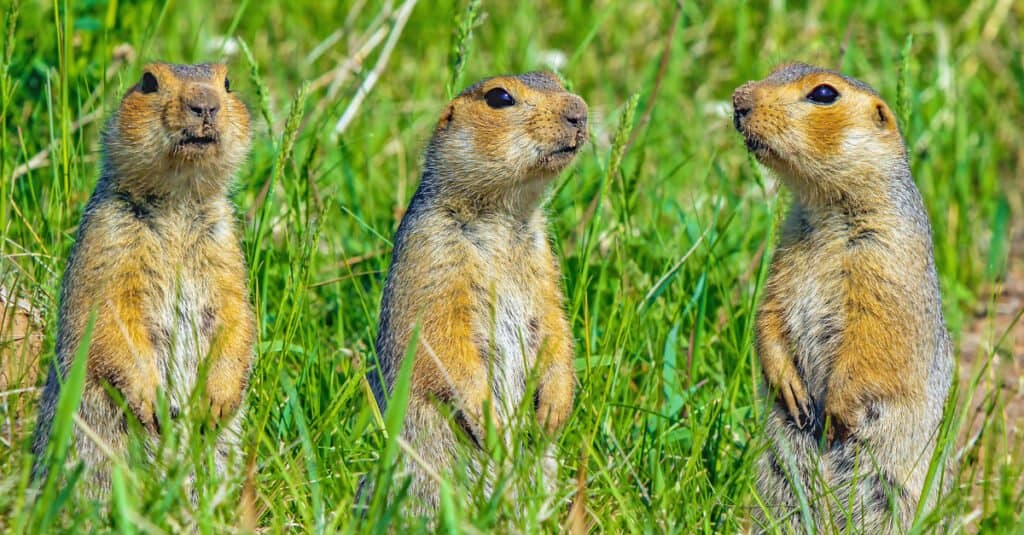
Great blue herons digest every part of gophers, including their small bones and fur.
©SERGEI BRIK/Shutterstock.com
5. Gophers Travel Backwards
A gopher finds it just as easy to travel backward as forwards. Their round furry bodies are incredibly strong.
Gophers have a body designed for digging. It makes sense they’re able to move forward and backward quickly. Their ability to rush in any direction has helped them thrive wonderfully throughout the years. Since gophers don’t have a great sense of smell or sight, they rely on their whiskers as they feel their way around.

Gophers have incredibly strong bodies designed for digging.
©iStock.com/dit:yhelfman
6. Gophers Are Omnivores
Gophers eat a diet of vegetation and small, soft-bodied insects. They are omnivores. However, they have a primarily herbivorous diet.
Gophers enjoy eating seeded egg corns, roots, and tubers of plants. Their diet is similar to what a woodchuck eats.
Certain species, like pocket gophers, are strict herbivores and only eat plants. One of their primary ways of getting food is by eating the roots they come across while building tunnels.
Gophers can also grab a meal by coming to the surface to feed on above-ground vegetation. To play it safe, a gopher usually pulls the vegetation into their tunnel. By enjoying their meal underground, the gopher doesn’t have to worry about predators like coyotes.
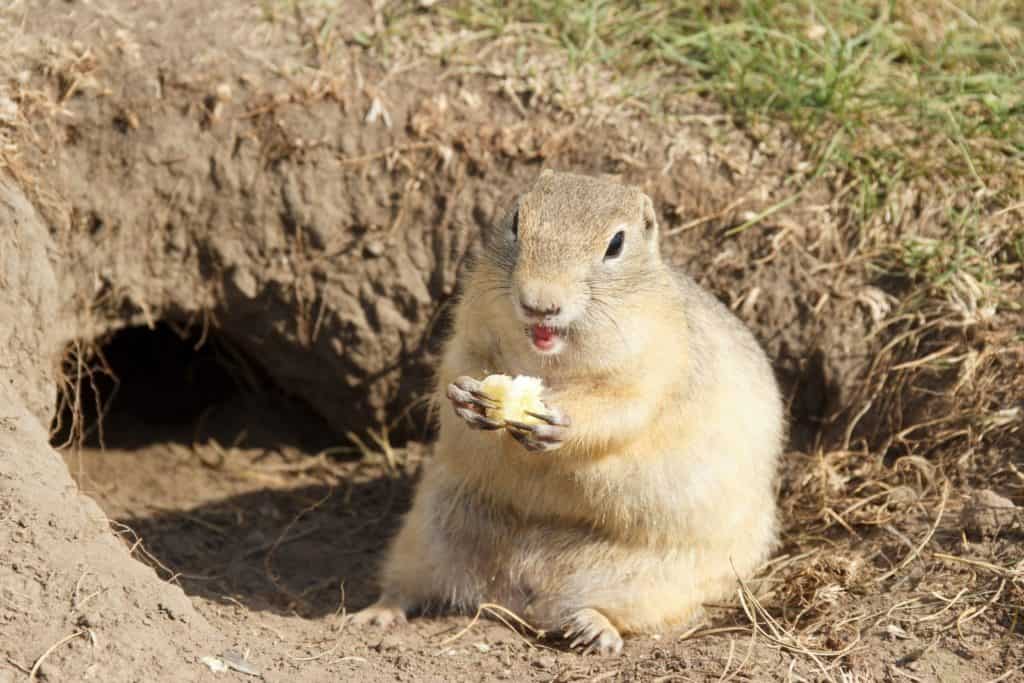
Although they eat small, soft-bodied insects, gophers have a primarily herbivorous diet.
©ToKa74/Shutterstock.com
7. Alfalfa and Dandelions Are Among Gophers’ Favorite Foods
Alfalfa and dandelions are gophers’ preferred food. They also enjoy eating succulent vegetation, grasses, seeds, and flowering plants. Gophers love eating the fleshy roots of plants.
Certain plant species, such as sweet potatoes and potatoes, are gopher favorites. Since gophers eat many different things, discouraging them from a yard or garden can be tricky, but not impossible.
However, even though gophers might eat up the plants you love, they can also help improve soil fertility. Gopher digging behaviors help keep soil healthy and absorb moisture more efficiently. They’re digging efforts are so helpful that scientists call gophers subterranean ecosystem engineers.

Among gophers’ favorite foods are sweet potatoes, potatoes, and the fleshy roots of plants.
©eumates/Shutterstock.com
8. Gophers Have Highly Sensitive Tails
By moving backward, the gopher doesn’t have to work so hard to keep the dirt out of its mouth. They’ll use their tail to lead the way when gophers travel back.
Gopher tails are short and have a little bit of hair on them. The average gopher’s tail size is around 4 inches long.
As a highly responsive sensory mechanism, a gopher’s tail provides them with all sorts of information. Since the tunneling systems are entirely dark, they rely on that information to get from point A to point B.
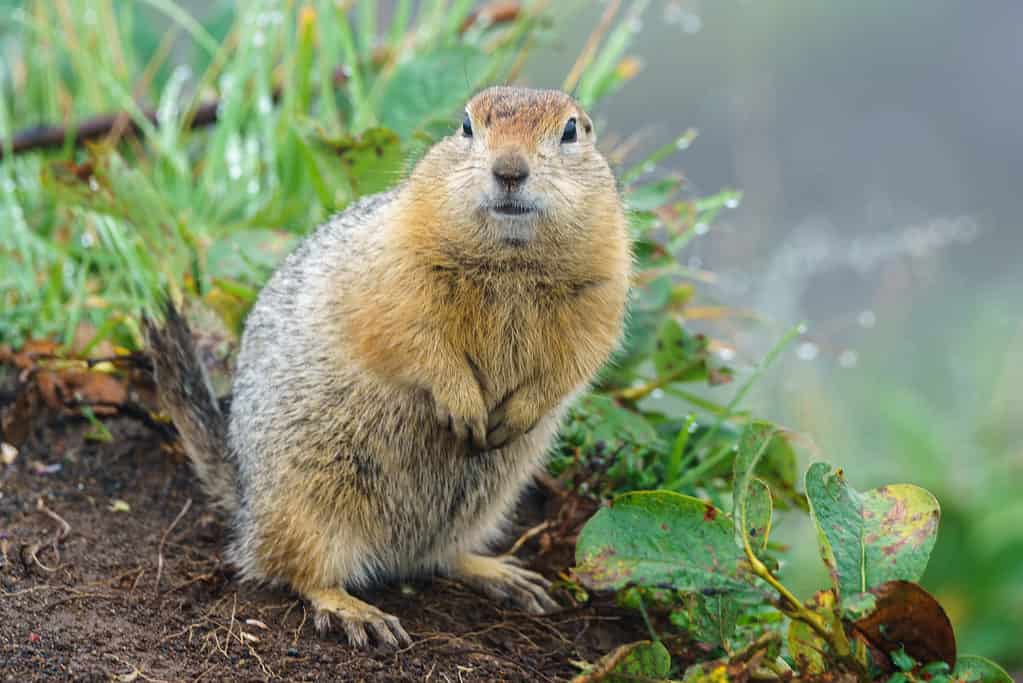
Gophers’ tails are short and on average around 4 inches long.
©Pavluntic/Shutterstock.com
9. Gophers Are Fossorial
What other incredible gopher facts should you know? Gophers are ground dwellers, making them fossorial animals. Fossorial or burrowing animals live primarily underground, but they do come to the surface on different occasions.
Other fossorial animals include moles, badgers, meerkats, clams, shrews, and voles. Sometimes these animals are also referred to as subterranean fauna.
Gophers love being alone, which is why you only find one gopher per tunnel system. However, they may be forced to share their tunnel system with rabbits, toads, and snakes. Since they spend most of their time underground, it’s rare to spot a pocket gopher.
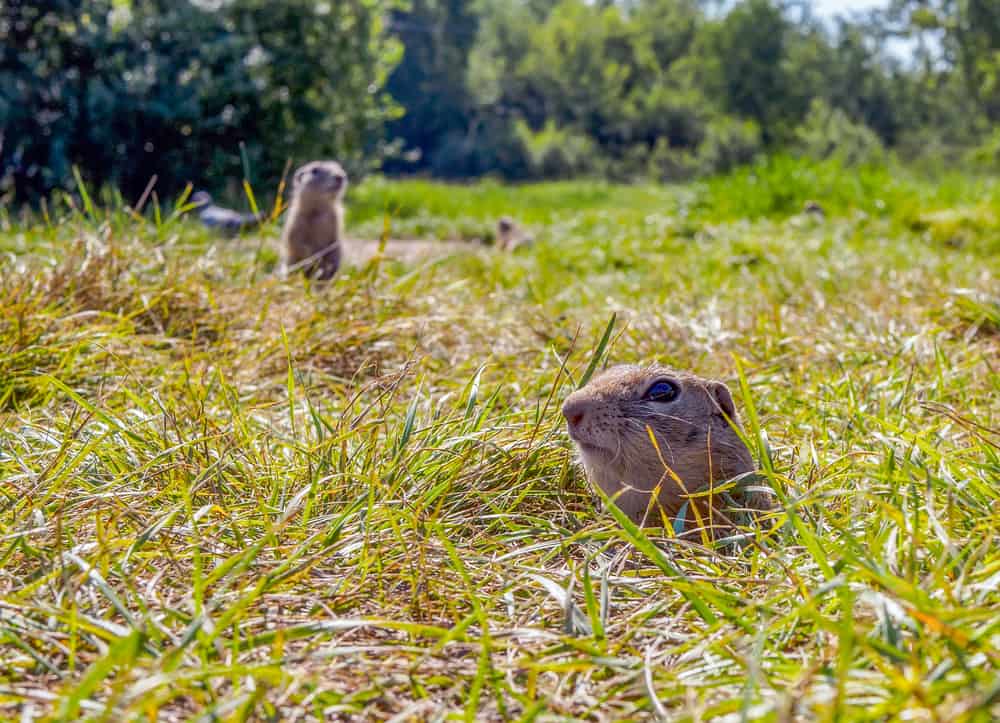
Gophers are fossorial animals who spend their lives underground.
©vadimserebrenikov/Shutterstock.com
10. Gophers Have Big Appetites
Last on our list of incredible gopher facts, we have food consumption. One tiny gopher will consume 60% of its body weight daily! That’s a ton of vegetation for them to go through. Scrubs, trees, roots, grasses, and herbaceous plants are on the menu.
These un-picky eaters will eat almost any plant they come across. Onions, broccoli, cabbage, Brussel sprouts, and other underground growing foods are on the gopher’s menu.
There aren’t a lot of plant-based foods that gophers won’t eat. Gophers and beavers even share a love for eating bark.

One tiny gopher will consume 60% of its body weight daily.
©eumates/Shutterstock.com
The photo featured at the top of this post is © eumates/Shutterstock.com
Thank you for reading! Have some feedback for us? Contact the AZ Animals editorial team.






